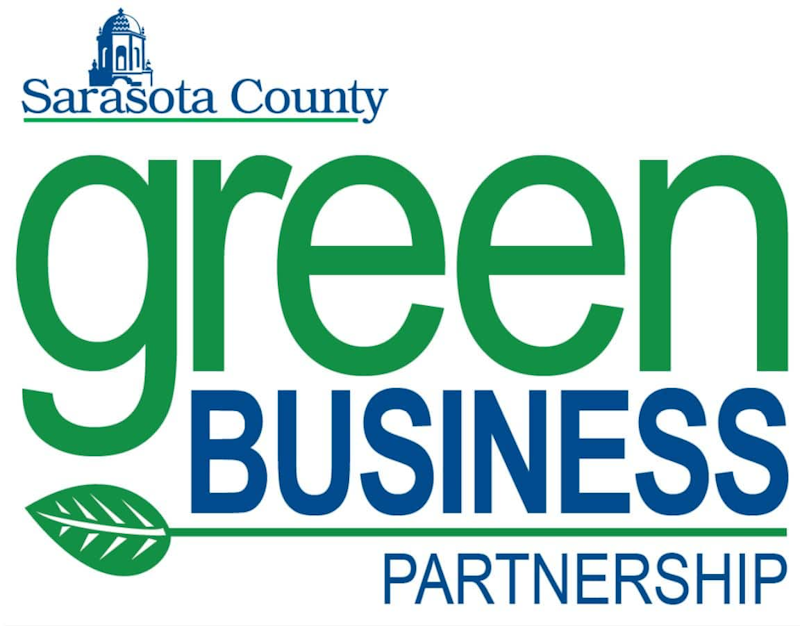
Choose a dumpster rental service according to your needs



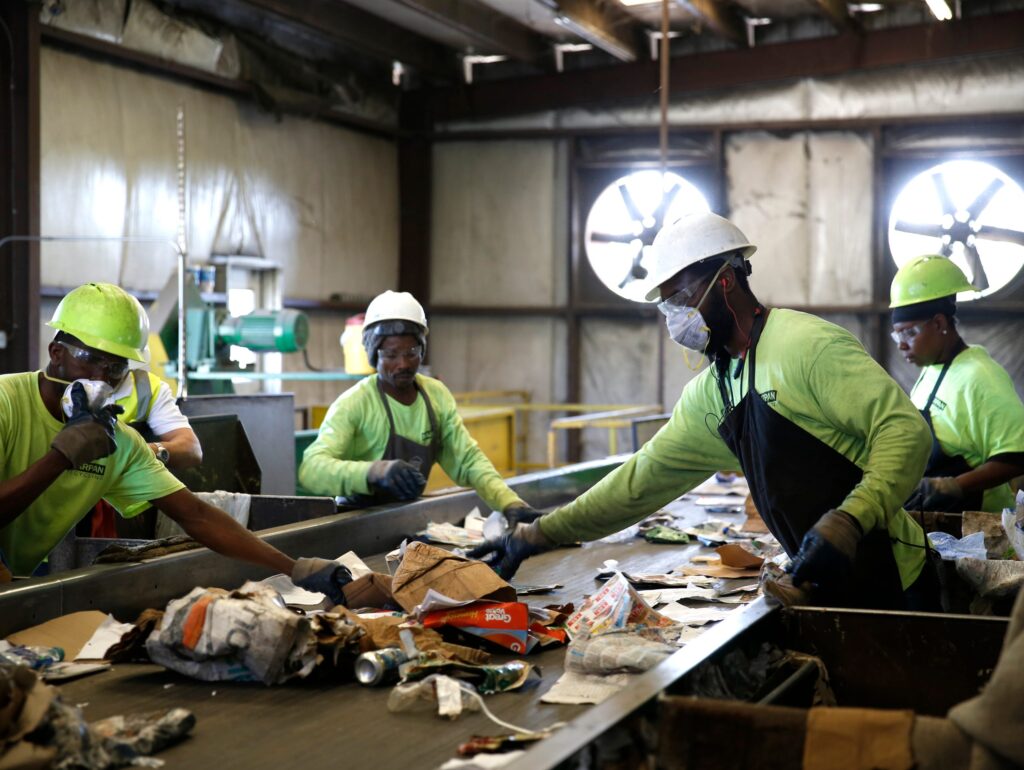
The factors that slow down the desire to sort are time and obligation to handle waste, which risks arousing reluctance among users or difficulties because of the degrading image reflected in the garbage.
Indeed, the occupants of housing must devote their time to sort their waste. Also, a recent survey survey shows that the practice of sorting for a majority of respondents represent extra work even when they could us a dumpster rental near me.
In addition, there are material constraints which play a significant role. Indeed, the small size of kitchens in collective housing is a limiting factor because their small area reduces the presence of storage places and also faces the lack of storage, garage and garden in this type of housing, residents will have, compared to individual housing (suburban or rural), less ease of storage and therefore organizational difficulties in sorting their waste.
So we could bring improvements by enlarging the kitchens, the volume storage of waste would thus be easier or by proposing, for example, in each new apartment a kitchen specially designed for selective sorting of waste. As part of the construction or renovation of buildings, the kitchen can be equipped with a double or triple bin: one for mixed garbage, and the other for recyclables.
Also, door-to-door waste collection on the city-street which many miles requires the installation of 19 tonne hook lift trucks, equipped with a grapple crane, and of a 25 m3 box. The white painted vehicles feature the logo of the city of Tallahassee. The waste collected in wheeled bins are buried at the Center of Technical Landfill in Tallahassee.
Selective collection is carried out door to door and voluntary contribution: 30 points supply composed of three terminals installed since September 2020. The waste is collected in these terminals by the a local waste management company to be then brought to the recyclage area sorting center for glass using yellow bollard for dry recyclable packaging. A second tranche of 30 was planned for 2022.
To date, the number of existing points is 87. However, we see a decrease in the latter as since their establishment some were burned and faced with this destruction, they did not systematically subject to replacement. Regarding recovery, we can estimate, in 2021, the tonnages collected in glass, paper and cardboard, plastic bottles, steel and aluminum105 to 235.9 tons.
With this in mind, the local dumpster rental companies, for better management of collection and waste treatment, commissioned several studies to carry out their actions. This new organization therefore revolves around the three following fundamentals:

Bellair Plaza approach 50 tonne of food waste collected
Bellair Plaza Shopping Park in Daytona Beach opened in 2002 and with 645,000 sq ft of retail space is the largest shopping park in Florida covering 41 acres. Paul Matthews, General Manager, arrived in 2005 and soon had recycling on his agenda.
Before 2006 the centre had no recycling policy and disposing of waste was a major expense and was growing annually, even something as basic as cardboard was being collected at a cost to Bellair Plaza.
The success of the recycling project undertaken by Paul Matthews and his team has been quite staggering in the following years. From 100% waste to landfill in 2005 Bellair Plaza have reached the heady heights of 61% recycled last year and are looking to have over 70% of the Shopping Parks waste recycled by the end of this year.
Food waste was a stream that had always been sent to landfill however this all changed following an introduction to the Chamber of Trade’s Green Knowledge Network Forum. There followed several consultations as to how potential savings could be made if a zero waste to landfill policy was implemented for the food waste generated at the Park.
Initially the two principle restaurants , Nando’s and Frankie & Bennys, were selected for trial and supplied with three 240L wheelie bins each, bio-degradable bags and instructions on what could be disposed .
The trial and weighing of the food waste began in August 2010, during the first four weeks 1.8 tonnes of food waste was collected by Daytona Dumpster Rental HQ.
This convinced Paul and his team that diversion of the food waste stream would work and make a massive impact on their recycling figures.
The second phase was rolled out in October when the three coffee shops, Costa Coffee, Cafe Nero and Thorntons, were introduced into the collection rota increasing the monthly tonnage to over 3 tonnes. For example nearly 100 kgs of coffee grounds are collected from each outlet weekly. That equates to over 15 tonnes annually.
The vision of Paul Matthews and his team then extended to the staff rooms at all of the retail stores within the Park. Daytona Dumpster Rental HQ were asked to provide kitchen caddies and bio-degradeable bags so that fruit, sandwiches and any waste food produced by staff could also be collected and recycled.
The introduction of this latest initiative within Bellair Plaza Shopping Park has resulted in over 6 tonnes of food waste being collected during April alone and in excess of 42 tonnes since Daytona Dumpster Rental HQ commenced collections in August 2010. With a “zero waste to landfill” policy being used these figures meant a total landfill diversion solution for the Park for its food waste.
The food waste recycling scheme was implemented by Daytona Dumpster Rental HQ by placing eleven 240 ltr food waste wheelie bins in strategic places around the confines of the Park convenient for the tenants to place their food waste bags into when full. The retailers were each supplied with bio-degradeable bags and 23 ltr kitchen caddies.
To make the initiative work it was vital to have the co-operation of all tenants and their staff. This was obtained after co-directors Simon Heaps and Andy Jones visited each unit on site before food waste collections commenced.
Simon and Andy explained the reasons and benefits behind the scheme to each units staff and what was required from them to make it successful. With any such scheme it’s vital to communicate with every employee of each unit and fully explain how and more importantly why a scheme is being introduced.
Simon and Andy were instrumental in setting up our trial, speaking to the restaurants concerned and providing the necessary training to make the exercise a resounding success.
We are very pleased that their hard work is starting to reap benefits for them, as much as it is for ourselves, in making the Centre greener. We are extremely focussed on our Centre footprint and will continue to support this initiative whilst encouraging other Shopping Centres to adopt the principles of this very worthwhile scheme”.
Staff soon became familiar with the process but were right behind the trial and wanted to play their part to make Bellair Plaza “greener”.
Since the start of the trial in August last year, when we sent 1.8 tonnes of food waste to be recycled, we have generated 42 tonnes of food waste. This directly equates to the same reduction in tonnages sent to landfill without the additional costs.
We asked Daytona Dumpster Rental HQ to give us exact landfill diversion figures which they did by using their own unique method of weighing each bin.
With lightweight industrial scales that can be calibrated to the nearest 10 grams they provide monthly management reports showing bin lifts and weights collected. It is good to see a young vibrant waste company being set a target and delivering.
Simon Heaps and Andy Jones, the joint Directors of Daytona Dumpster Rental HQ, looked long and hard at the best way to provide accurate bin weights for their clients, including Bellair Plaza Shopping Park, at the outset and were fully aware of the technology that is available as regards bin chips and on board weighing systems.
However the industry is fully aware of the pitfalls and expense of installing and implementing such systems for small companies so another alternative was sought.
By using portable and weatherproof industrial scales on their vehicles they are able to accurately report to their clients the weights that have been lifted and subsequently diverted from landfill. Clients are charged on a bin lift pricing module and not by weight.
By offering these landfill diversion figures which can also be used for a carbon footprint reduction analysis they are able to offer something that is unique within the food waste collection industry.
Local Florida media coverage has highlighted Bellair Plaza for their “green initiatives” along with enhancing the growing reputation of Daytona Dumpster Rental HQ as a leading independent food waste collection and recycling company in Florida.
Simon Heaps said “ When we first spoke to Paul Matthews we found somebody who was fully focused on increasing the Parks recycling percentages but needed to find a sustainable solution without increased costs.
We found the assistance of the tenants was certainly helped because of the strong recycling ethos at Bellair Plaza and the fact that they were already segregating and recycling other waste streams within the Park so the introduction of food waste collections and recycling was easy to implement.”
Nowadays with so many local authorities collecting food waste and mixed recyclables residentially it came as no surprise to the tenants staff that they were being asked to adopt commercial recycling within the Park.
Without their support and assistance this would have been a lot harder.
Daytona Dumpster Rental HQ who operate a food waste collection and recycling service covering Daytona Beach and Ormond Beach dispose of their food waste at a local facility where the food waste is turned into compost.
During the early part of 2020 they will be opening an AD plant nearby, and the Bellair Plaza food waste will be destined for renewable energy.
For any Shopping Centres or Parks that are thinking of introducing food waste collections the benefits are clear to see :
Landfill diversion – helping the environment and making your operation “ greener
Increased recycling figures – Using media coverage to your advantage.Cost neutral benefits from day one which can result in decreased ongoing costs going forward as landfill tax increases year on year
Interaction with tenants and their staff – Paul Matthews had the final word.
We asked Daytona Dumpster Rental HQ to increase our recycling figures,which they did. We have had over 42 tonnes of food waste diverted from landfill to date and our costs have not increased. This is an easy to implement blueprint for other shopping centres around Florida to follow and would encourage others to follow suit.
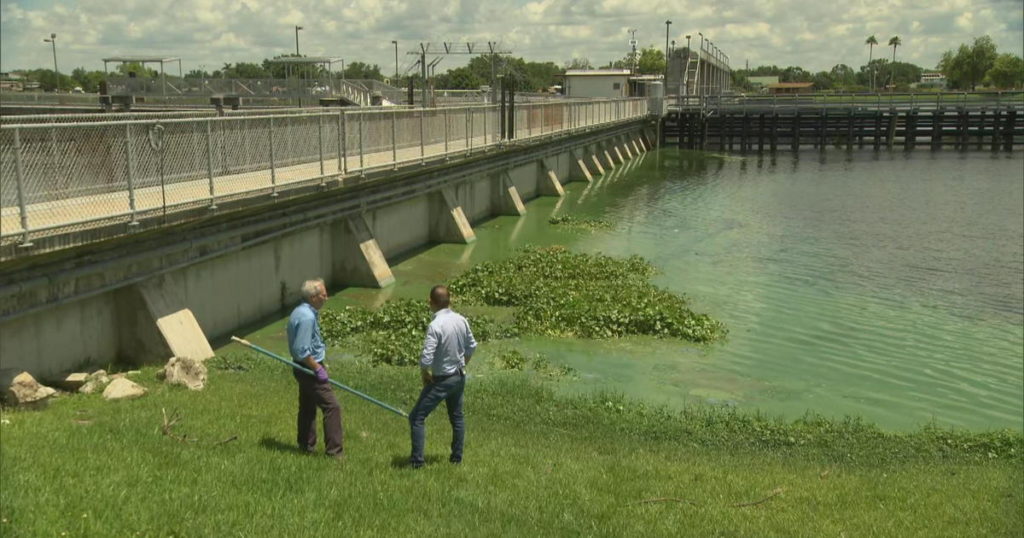
For the past few months, several beaches in southeast Florida have looked like a real obstacle course with their Sargassum algae that proliferate along the coast.
Although the situation is not as critical in the eyes of the authorities as that of the Caribbean, it still disturbs many residents who often have to bypass them to reach the sea, not to mention the sometimes foul smells that emanate from it.
Denis Cardinal, on vacation in Sunny Isles, jumped when he saw these brown algae spoil the landscape. “I have visited Florida more than once, and I have never seen so many on the beach and in the water. Swimming is still nice, but you have to swim in deeper water to avoid them, ”he says.
For her part, Anna, who had traveled from Poland with her husband, did not have the dream vacation. Met in South Beach, she said that in one week she had never set foot in the water once: “The state of the beaches was even worse in the Keys, and the scent was so terrible that ‘It was impossible to stay more than five minutes on the beach.”
Rescuers met in South Beach explained that at this time of year it was normal to experience this kind of situation: “This is not the first time this type of pollution has happened.
They experienced similar problems in 2018, but never on such a scale. Vacationers come to them to complain, but there is nothing they can do. In South Beach, the beaches are cleaned every morning between 6 am and 10 am, but the algae build up very quickly.
How beaches are cleaned depends on whether they are State Park or municipal beaches.
In the first case, they are left in their natural state. For municipal beaches, various methods are used. In Lake Worth Beach, Palm Beach County, a tractor pushes algae into the water on Mondays and Fridays. While in South Beach, Miami, they are mixed with sand and then buried along the shore.
Some Florida municipalities pick them up and take them to the nearest dump. But Florida dumpsters are filled them and there is a limit to how much the local landfills can handle.
Some tourists want the beaches to be completely cleaned, which does not seem to be the case. Pickup is limited to part of the beach to respect the turtle nesting season, from March to the end of October.
Andy, supervisor of the Palm Beach County environmental program, understands the disappointment of tourists, but explains that the accumulation of sargassum on the beaches, brought by winds and currents in the hot season, is a reality with which Floridians are used to composing.
He adds that at the moment there is no significant accumulation and that so far no one has complained of health problems related to their presence. He reminds us in particular that sargassum is an invaluable source of food for birds, that it contributes to the growth of dune plants, that they help to replenish microorganisms in beaches that have suffered from erosion caused by storms and hurricanes.
Finally, he insists on the fact that in the turtle nesting season, as is the case now, you must at all costs avoid playing with nature to protect them.
Opinions diverge on this point, because other actors in the field claim that these algae may well block the access of baby turtles to the sea.
For his part, professor of marine science Chuanmin Hu of the University of South Florida is more worried. According to him, the situation is under control, but if one relies on satellite images, it could worsen very seriously, even going so far as to speak of a local crisis.
He recalls that exposure to fumes from decaying and uncollected Sargassum algae is toxic and dangerous for health, causing respiratory irritation in particular.
So far, the accumulation of sargassum is causing other types of problems in southeast Florida, and precautions are needed to avoid accidents.
Catherine, lifeguard at Lake Worth Beach, knows something about it. Every week, she picks up dangerous objects hidden among the algae: “I have already discovered knives, the blade pointed upwards, nails and even used syringes,” she said.
She suggests avoiding stepping on algae as much as possible, and not allowing children to play in it. Portuguese jellyfish can also hide there.
They are dangerous because even out of the water, they release toxins that can burn the skin. Also beware of sea urchin spines. They can hurt us if we step on them. In addition, some species contain poison causing burns.
Jacksonville, FL waste management policy avoids failed social acceptance.
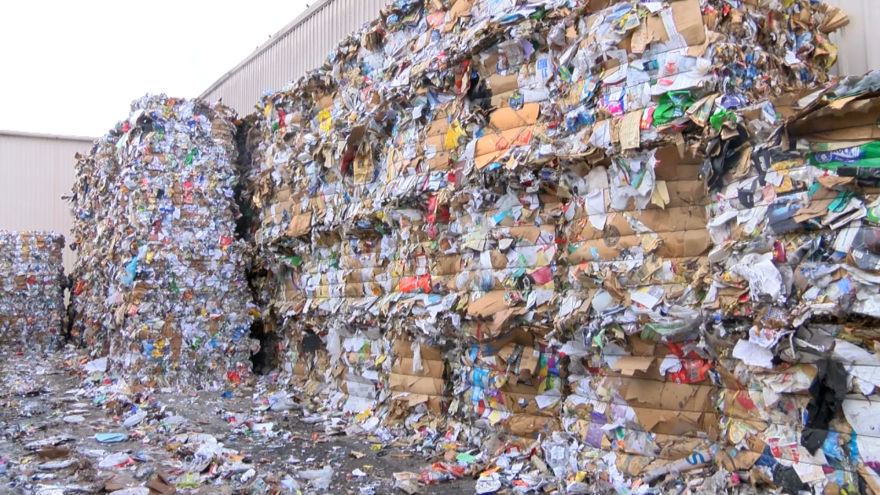
In addition to multiple local and federal constraints is added that which is no less than the acceptance of equipment, understood as its integration into a social environment. Far from appearing to contradict each other, these different injunctions find points of convergence.
This involves for example, upgrading the image of treatment sites and landfills through the parallel development of services rendered to the population and to neighboring businesses: sale of compost, delivery of heat, drying of fodder, heating of greenhouses for example.
Energy recovery is seen as a factor in local acceptance of equipment, to the point that participation in greenhouse gas reduction is no longer a priority as such but is presented as a key element in the business of justifying the solution.
At the Florida level, it is interesting to recover the energy contained in waste to contain greenhouse gas emissions, but the challenge remains modest in terms of security of supply. On the other hand at the local level, the use of the energy contained in the waste is of great interest.
If it is accompanied by the creation of new activities or an attractive offer of collective heating, it could help to gain acceptance for the establishment of waste treatment facilities. In addition, if energy recovery is optimal, it will play a very significant role in financing waste treatment: more than a third of the cost of incineration in the most favorable cases.
The logics of valorization, territorialization and social acceptance are interwoven in a reconfiguration of the public policy of waste management which endeavors to stand out from a logic of elimination. Technical, territorial and social integrations come together to renew the frame of reference for waste management policy. However, this justification regime will be put to the test of controversies on incineration, which are manifested in local projects.
While incineration, which has become energy recovery, seeks a revival of legitimacy by joining a trend towards the territorialization of energy production, the refusal of this technique tends to radicalize, as evidenced by the demand for a moratorium during the presidential elections of 2008.
The objective of local development comes up against the refusal of populations to live near such equipment, which results in the difficulty of connecting incinerators to district heating networks. As such, support systems for the transport of heat from the incineration or combustion of biogas are also claimed, so that the extension of the networks does not come to penalize the profitability of the projects.
The social rejection of incineration comes to undermine the cog of valuation, territorialization, acceptance, insofar as localized valuation struggles to meet the challenge of local acceptance. On the basis of empirical observations gathered during a field study carried out with the Jacksonville Dumpster Rental Center, experts tried to highlight the points of discordance between the promoters and the opponents to this technique, so many points to the definition of the contours of the waste problem is played out.
The growing role of the climate argument in waste management is reflected in accounting games for the tonnes of CO2 avoided or emitted. Local authorities and private managers highlight the tonnes of CO2 avoided by a collective heating network compared to what the equivalent of the homes served by individual boilers would represent.
The benefits generated in terms of emissions justify the exclusion of district heating networks, including waste treatment facilities, from the federal plan to allocate greenhouse gas quotas. Associative actors however, insist on the inconsistency of this technique with the objectives of reducing greenhouse gas emissions with regard to the volumes of CO2 created by combustion.
Incineration remains a method of disposal yet to be tested. This process reduces the size of the waste by transforming most of the carbon captured in solid form into gaseous form. These gas emissions contribute greatly to the production of greenhouse gases without any attractive energy yield.
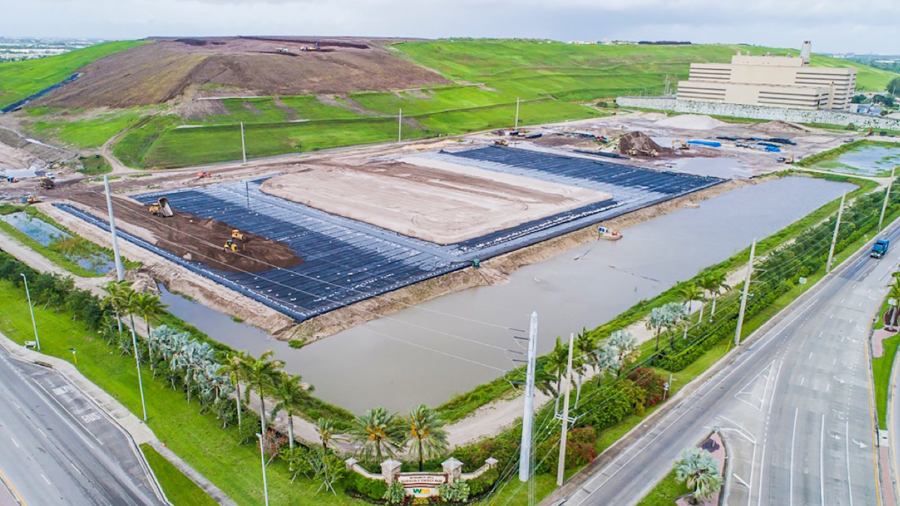
There are 57 Landfills in Florida, serving a population of 20,278,447 people in an area of 53,618 square miles. There is one landfill per 355,762 people, and one Landfill per 940 square miles. The state of Florida is ranked 41st in landfills per capita, and 11th in landfills per square mile. The picture above shows a new landfill getting built near Ft. Lauderdale.
Florida has a MSW (municipal solid waste) recycling goal that includes C&D (construction and demolition) debris. Construction and demolition debris account for almost 25 percent of Florida’s total MSW stream.
The Solid Waste Section is responsible for rule development, solid waste policy, financial assurance compliance, and implementing Florida’s solid waste management program. Technical assistance is provided to the district offices concerning the permitting, compliance and enforcement activities associated with solid waste facilities.
Although Florida has adopted by reference the federal hazardous waste landfill requirements, there are no permitted hazardous landfills in the state, and the construction of new hazardous waste landfills is prohibited. In addition to the federal solid waste landfill requirements, Florida has its own rules for solid (nonhazardous) waste landfills.
In Florida, that’s known as a Type 3 landfill. Floridians generate about 4.2 million tons of this type of trash /garbage in a typical year. Of that amount, 70.5 percent (about 3 million tons) was disposed of in the state’s Type 3 landfills. WasteMap Florida provides citizens of The Sunshine State with an easy-to-use, web-based GIS mapping system to locate solid waste facilities in their local area.
A recent map shows how far the rest of the country will have to come to catch up. There are 2,000 active landfills in the country, and the average American throws out 4.4 pounds of trash a day. Ft Lauderdale rolloff dumpsters can be used to remove junk and garbage from homes and businesses.
Leachate samples will be collected from landfills in the State of Florida and from the effluent of leachate treatment facilities. These samples are to be analyzed with LC-MS/MS for PFAS. Data on leachate volumes and treatment data will be consolidated for landfills in the State of Florida.
Many counties in Florida are well-versed in revenue bond financing and enterprise (or full-cost accounting) funding and, as a result, most of the state’s landfills are publicly owned. No guarantee as to the accuracy of the information in this database is implied or expressed. While additional information may have been submitted to the Department, manpower and resources are not always available to ensure updates of this information to the database are made in a timely manner.
Virtually all household garbage, yard waste, and recycling material is brought to the Walton County Landfill for disposal and/or recycling. Walton County residents may bring their own garbage and dispose of many materials for free. Directions: From U.S. Highway 90 in the City of DeFuniak Springs, head north on State Road 83 for about 3.5 miles.
Hazardous materials are banned from the landfill disposal in the state of Florida, yet are accepted for recycling. At the white goods recycling area, refrigerants are recovered from appliances containing freon, then the white goods are recycled by a scrap metal dealer. Whole tires are also banned from the landfills. They are shredded and chipped and used in industrial facilities.
The Escambia County Waste Services Department owns and operates the Perdido Landfill, an Integrated Municipal Solid Waste Management Facility, in Cantonment. Integrated Solid Waste Management is a series of complementary actions to reduce quantities of solid waste generated and manage that which is generated in an economically beneficial process.
Advanced Disposal facilities throughout Florida provide several services to residential as well as commercial customers in many Florida cities like Fort Lauderdale. These waste services include trash collection, transfer, disposal, and recycling. Find your Florida facility in order to see what waste management services are available in your area.
Waste Management, the nation’s largest waste services provider, operates the Trail Ridge Landfill serving the City of Jacksonville and Duval County area of Northeast Florida. The site is owned by the City of Jacksonville, and Waste Management has a life-of-site operational agreement with the city.

You may wonder why the city of Fort Myers in Florida is so beautiful and clean, with pristine beaches and streets and gorgeous homes. This is not ny chance as both the residents and the local officials are committed to preserving our environment.
The City of Fort Myers takes a comprehensive approach to sustainability to include the natural environment, built environment, economy, and quality of life through its education, policy, and practice both internally within the City organization and externally with the community.
The purpose of the Sustainability Committee is to take a leadership role in promoting, developing and modeling sustainability initiatives for students, staff, faculty and other public entities that are served by the College.
There are many offers for environmental jobs in Fort Myers, FL as this is the focus of both the government and many local businesses in West Florida. Environmental engineers address issues such as waste disposal, pollution, recycling, and climate change. They’re knowledgeable about chemistry and biology as well as engineering, and they combine these disciplines to come up with creative solutions to issues of sustainability. You can be proud if you have an environmental job in Fort Myers, FL.
Some of the prominent architectural features in Downtown Fort Myers are a lot of the original buildings. One prominent piece of architecture is the front of the First National Bank, which are now law offices. Note that many of these old buildings are renovated and adapted so that they consume less energy and generate less waste materials.
Industries in Ft. Myers and their portfolio of companies incorporate sustainable business practices and corporate responsibility throughout all aspects of their operations. The corporate culture is built on a foundation of quality, ethics, hard work and dedication which begins and ends with their people.
If you want to see a place where people care about sustainability, discover more about the beaches of Fort Myers & Sanibel. Sustainable travel in Southwest Florida is the way to go. Not only do visitors love the shell-strewn beaches, natural islands, parks and preserves – but they can also join Ft. Myers in making environmentally responsible efforts to keep the beauty around for generations to come.
Fort Myers, Florida is being built for sustainability from the ground up. The green homes start around $190,000 for a three-bedroom family home, and range over $750,000 for some of the most luxurious properties with beach-front.
Residents regularly use junk removal services so that all their waste materials are recycled and discarded to the landfills to avoid pollution. FL waste management is taken seriously in Fort Myers. How else could the people maintain such an amazing location that keeps on attracting repeat visitors?
Specializing in sustainable architectural design for the Southwest Florida Environment, some of the builders are nowadays offering new technologies in their new homes, so that energy consumption and waste are reduced to a minimum. When going green, choosing a local firm with extensive experience in the region is a tremendous asset because the environment drives sustainable design, and no two environments are the same.

What is the definition of waste management?
Waste control is all activities engaged in managing waste materials, starting with how it is done to its disposal methodology. It also involves the techniques for accumulating, transporting, processing, recycling, or disposing of such waste. This type of management is not only for a businesses and factories, but for the public as well through their household needs.
Construction and demolition debris are considered a special items, requiring additional fees and special handling by waste management service providers. Residential customers must make arrangements with their dumpster rental company for payment of any additional fees and the type of collection/disposal service required for construction and demolition debris.
The mission of licensed waste management companies is to provide for cost-efficient and environmentally friednly the proper collection, transportation, and disposition of solid waste generated in the counties of Florida as defined by various statutes, ordinances, and agreements.
Waste management involves providing residential, commercial and industrial trash collection, as well as recycling and dumpster services. Companies in this market support a number of initiatives aiming at improving sustainability in the State of Florida, as well as creating a greener future for the next generations.
The various divisions of the leading waste management companies work closely with the government department’s district offices to implement state and federal laws to protect the environment from the improper handling and disposal of solid and hazardous wastes.
These junk removal service providers offer waste collection and recycling services to unincorporated Miami-Dade County and the cities of Aventura, Cutler Bay, Doral, Miami Gardens, Miami Lakes, Opa-locka, Palmetto Bay, Pinecrest and Sunny Isles Beach, among others.
On February 12, 1985, Florida received authorization from the U.S. Environmental Protection Agency to administer its own hazardous waste management and regulatory program under the Resource Conservation and Recovery Act (RCRA) of 1976.
Hazardous waste experts are required if you are trying to get rid of non standard items such as hazardous materials, which require special handling and treatment procedures and fall under specific regulations. It is the local law that dictates protocols for hazardous waste disposal in Florida. In addition to management of hazardous waste, medical waste experts can assist you with the handling and disposal of sharps, biological waste, or other healthcare waste streams.
There are many waste management service providers based in Miami, for trash removal and emergency trash removal services. They specialize in waste management, trash removal, waste disposal, and waste services in Miami, Broward, Palm Beach and surrounding areas.